In the wake of two harsh winter storms, Bill Mook says the shellfish industry must further adapt to climate change, calls for greater mitigation efforts
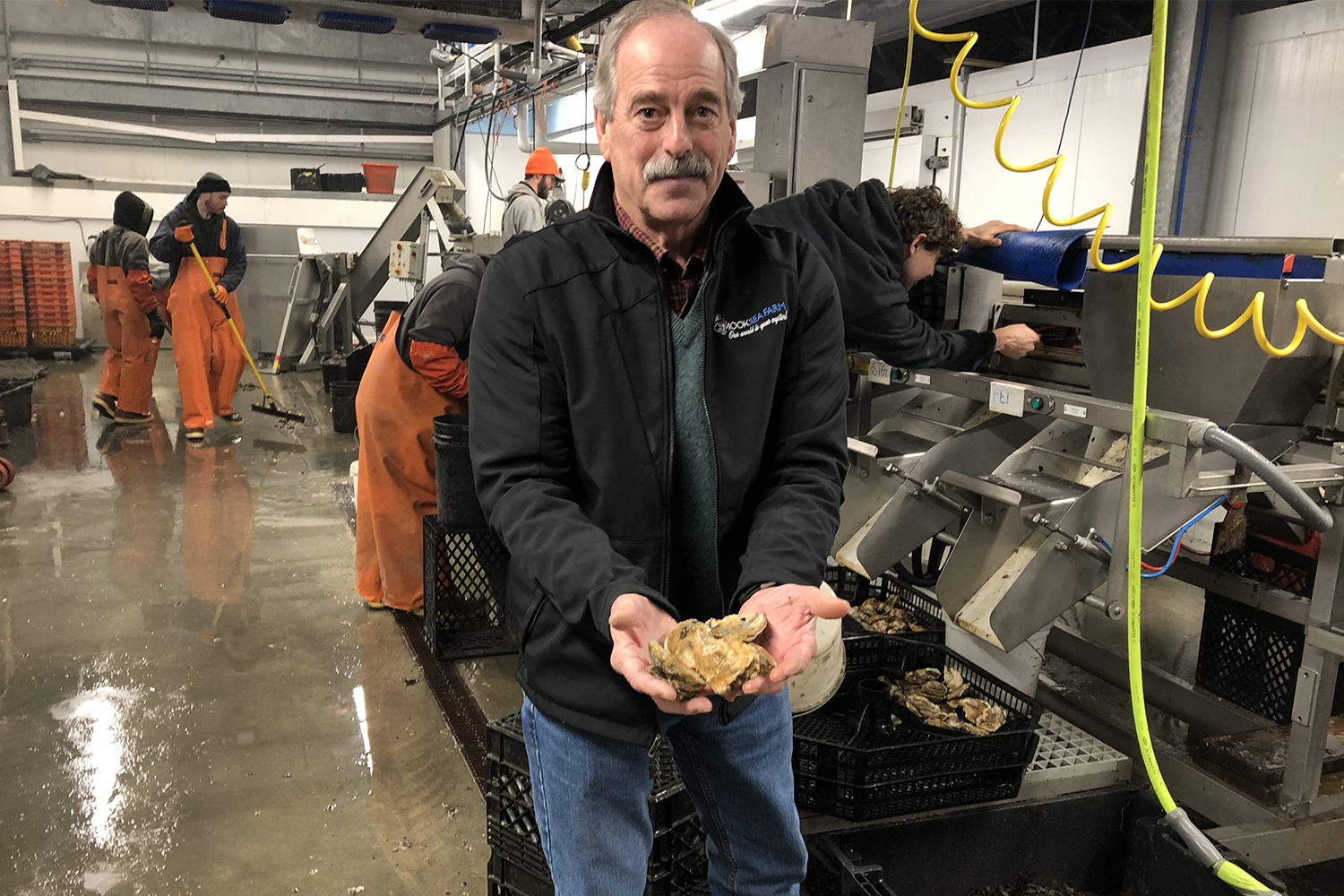
The one-two wallop of mid-January storms was an eye-opener to coastal business and property owners along Maine’s long jagged coast. Never before had they seen such widespread destruction and chaos brought on by environmental changes widely considered a result of climate change.
Bill Mook’s eyes, however, were already wide open to the long-term shifts of temperatures and weather patterns. His oyster-farming business has long withstood the impacts of rising sea levels, warming waters, more frequent and intense storms, ocean acidification, harmful bacterial outbreaks — all of which have forced him to adapt to what nature hurls his way.
Through the years, the changing climate has dictated how Mook Sea Farm has operated. He’s changed how he processes oysters to ensure they’re safe to consume and altered the mooring system that holds his oyster cages in place to withstand rising sea levels.
Inside his processing plant, he built a spacious addition with an elaborate self-circulating water system that allows work to continue after heavy rains that would bring his business to a halt in the past.
The record-high tides, powerful storm surges and widespread damage during two January storms served as a reminder that more needs to be done to mitigate — rather than just respond to — climate change, he said. Those storms destroyed generations-old fishing wharves, damaged and flooded oceanside homes, swamped neighborhoods, demolished roadways, eroded beaches and swept old fishing shacks and other structures out to sea.
“We can adapt all we want, but these problems will still be happening,” he said on a recent February day at his plant on the shore of the Damariscotta River. “The problem is, how long can you afford to adapt before we address the root cause of the problem?”
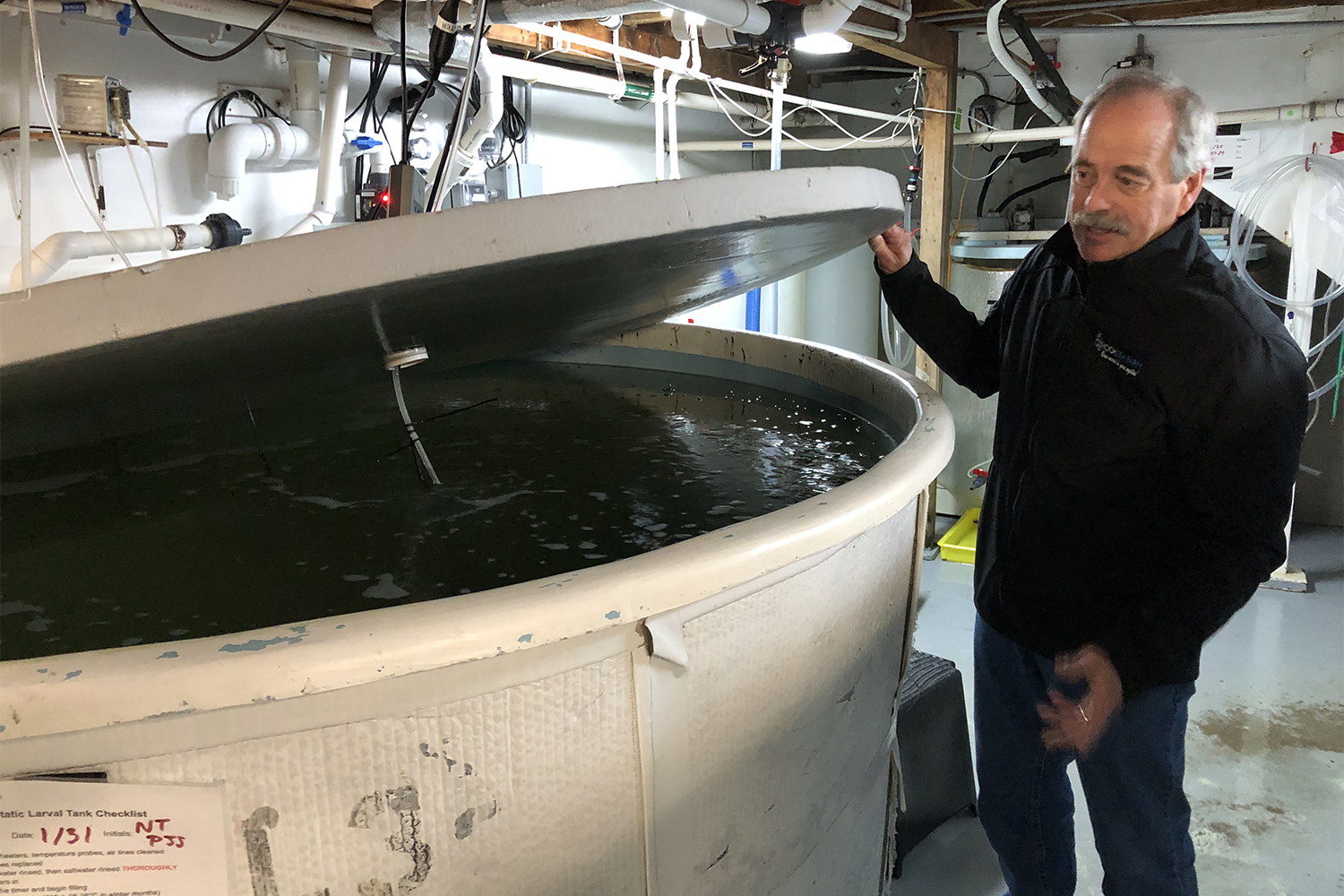
Mook started Mook Sea Farm in 1985 on the Damariscotta River in South Bristol, a small town on the Maine coast about an hour-and-a-half drive northeast from Portland. He had one employee and made most of his money as a hatchery selling seed oysters and clams, primarily for restoration projects.
Today, he has 30 employees and grows about 4 million market-size oysters a year that he sells primarily to wholesalers, as well as Whole Foods stores nationwide. When sold to consumers, his oysters are branded with names like Mookie Blues, Moondancers and Pemaquid Points. He still operates a hatchery, producing about 90 to 100 million seed oysters annually that account for one-fourth to one-third of his revenues.
He has roughly 5,000 floating oyster cages on lines in the Damariscotta River, and a processing plant that buzzes with activity. He has half a dozen or so flat-bottomed skiffs used to harvest the oysters year-round, and several buildings on a hill where his products are tested, sorted, stored and packed before making their way to market.
While running a business this size is certainly demanding, Mook’s biggest and most costly challenges are dealing with the environmental changes brought on by climate change.
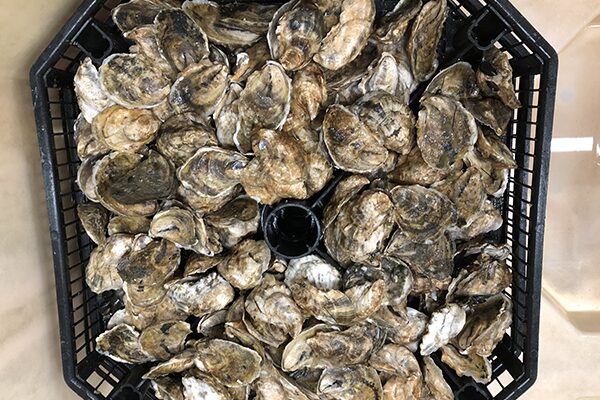
For one, the increasing frequency and intensity of storms have taken a bite out of Mook’s bottom line. State regulators typically close down shellfish harvesting after heavy rains because of concerns about high bacteria from runoff and sewer overflows. In Mook’s case, the closures essentially forced him to halt his business, sometimes costing him up to $60,000 in revenues every shutdown.
Years ago, shutdowns didn’t happen very often, he said. But they’ve been more frequent in recent years as heavy rainstorms became more numerous.
“As we grew, we realized the costs of these rainfall closures were increasing,” Mook said. “As we got to what our full potential could be, that was an unacceptable number because the number of closures was increasing each year.”
To maintain better control over the situation, he had a new addition constructed in 2018 that has four underground water tanks — 26,000 gallons per tank — that recirculate water through stacks of dozens of hard-plastic crates that can hold up to half a million oysters. The holding tanks allow his business to continue operating, and bring in revenue, during the shutdowns. It also increased the packing capability, improved the quality of his oysters and expanded his microalgae production for food for his hatchery production.
With a background in science, explaining the science behind oysters and their relationship with the environment is second nature to Mook. He has an undergraduate degree in earth and environmental science from Wesleyan University and was enrolled in a doctoral oceanography program at the University of Maine before changing course and opening his business.
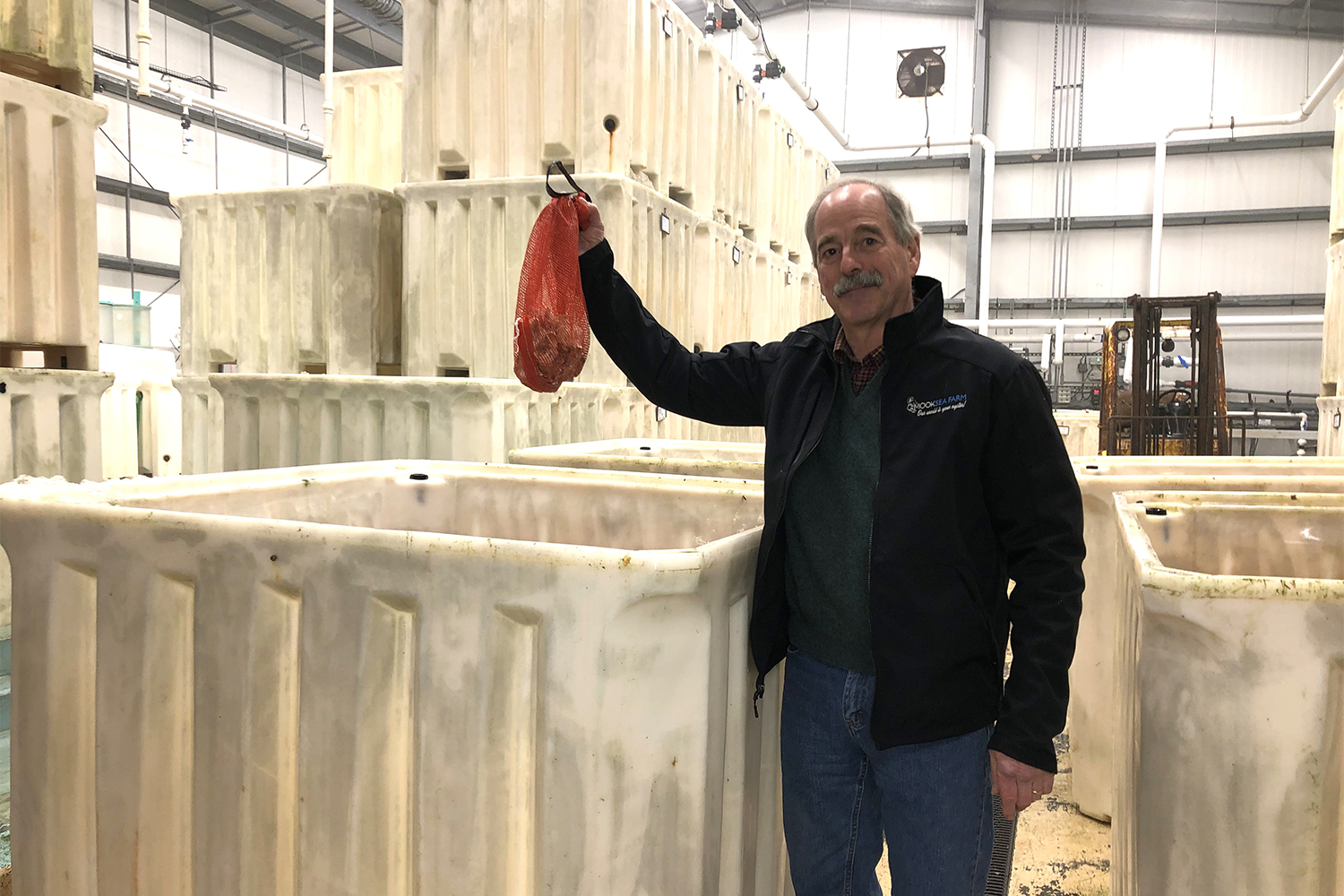
The Damariscotta River’s rising water temperature, he said, has led to an increase in levels of Vibrio bacteria, forcing him to develop a handling process involving temperature and feeding regimes to ensure the oysters are safe for eating.
Increased carbon dioxide in the atmosphere has led to ocean acidification, which erodes oyster shells and stunts the growth of both juvenile and mature oysters. In response, Mook treats the water used in the oyster culture with sodium carbonate and sodium bicarbonate to lower acidity levels.
Rising sea levels and the increasing regularity of violent storms have also forced Mook to alter the mooring system he uses to anchor the lines that hold his oyster cages.
“When I first got into this, we’d have these Nor’easters with 30 to 40 knots, maybe with a moderate storm surge,” he said. “Now we’re getting 50 to 60 mph winds with higher storm surges. And it’s been very hard on our mooring system. We’ve been rethinking all our mooring systems and investing in more resilient systems because of rising sea levels and the increasing intensity of the storms.”
Over time, Mook realized that other oyster growers were dealing with the same issues, and they shared ideas on what they could do. In the end, his and six other oyster farming businesses from the Northeast, the Mid-Atlantic and the Pacific coasts approached The Nature Conservancy (TNC), which then established the Shellfish Growers Climate Coalition in 2018.
The coalition serves as a way for shellfish growers to share their stories about climate change with each other, elected officials and policymakers, said Sally McGee, the coalition’s project manager for TNC. The goal: reduce carbon emissions.
McGee said shellfish farmers across the country are dealing with climate change issues. In the Northeast, it’s the increasing frequency and intensity of storms and ocean acidification. The Gulf of Mexico is facing more harmful algal blooms and stronger hurricanes. The Pacific Northwest has ocean acidification problems and more prolonged heat waves.
Maine oyster farmer stares down climate change, learns to adapt
Besides lobbying others for change, coalition members want to take action themselves, McGee said. The coalition is working on developing a “carbon footprint calculator” online tool to let businesses plug in parameters of their operations from hatchery to plate to help them identify how they can improve their carbon footprint, she said.
It’s also working with The Climate Initiative, a national nonprofit based in Maine, to incorporate ocean farming into its materials that can be included in high school science curriculums to raise awareness among students on how climate change is impacting businesses like Mook Sea Farm.
The coalition has grown from the original seven members to about 300 members today. Of those, about 75 percent are oyster farmers; the others include restaurant owners, wholesalers and vendors. That growth, McGee said, shows how climate change is affecting oyster farmers.
“The impacts are significant and they’re real — and they can’t ignore them,” she said.
Mook said the answer is to go “carbon-zero.” In addition to governments stepping up, businesses like his will have to be part of the equation, he said. As an example, Mook Sea Farm has a solar array and undertaken other clean energy initiatives that are good for business and good for the environment.
“It’s about completely changing how we interact with the planet,” Mook said. “I think it can be done. Whether it will be done is another question.”
Now that you've reached the end of the article ...
… please consider supporting GSA’s mission to advance responsible seafood practices through education, advocacy and third-party assurances. The Advocate aims to document the evolution of responsible seafood practices and share the expansive knowledge of our vast network of contributors.
By becoming a Global Seafood Alliance member, you’re ensuring that all of the pre-competitive work we do through member benefits, resources and events can continue. Individual membership costs just $50 a year.
Not a GSA member? Join us.
Author
-

Clarke Canfield
Clarke Canfield is a writer, editor and author who has worked for various newspapers, magazines and The Associated Press for more than 40 years. He has focused on commercial fisheries and marine-related issues for much of his career, and was once executive editor of National Fisherman and SeaFood Business magazines. He is also the author of a book about the New York Yankees. He lives in South Portland, Maine, with his wife.
Tagged With
Related Posts
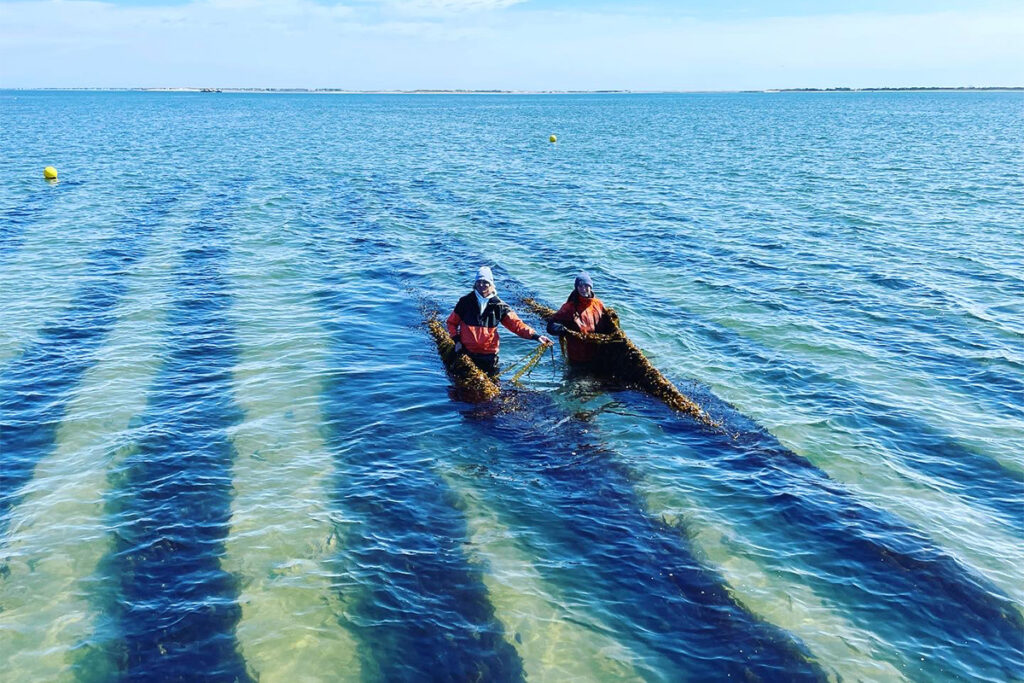
Intelligence
Meet the woman who’s pioneering commercial kelp farming in New York
Former professional basketball player Sue Wicks launches New York’s first commercial kelp farm, spearheading a growing industry for the state.
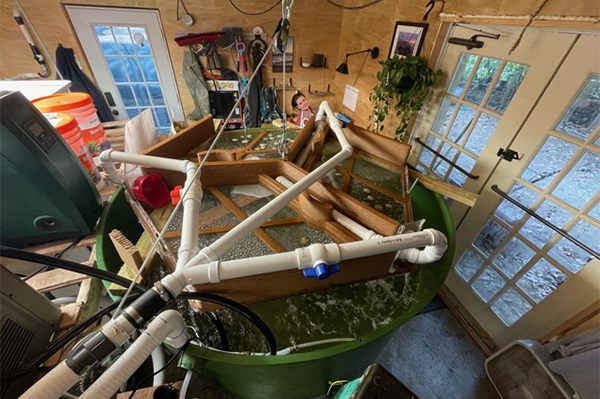
Innovation & Investment
Growing oysters in a garage? Meet the maker of the world’s first 3D-printed oyster tank
New Maine oyster farm Muddy River Farm Aquaponics will be using a revolutionary new tank for its oysters, one made of 3D-printed wood.
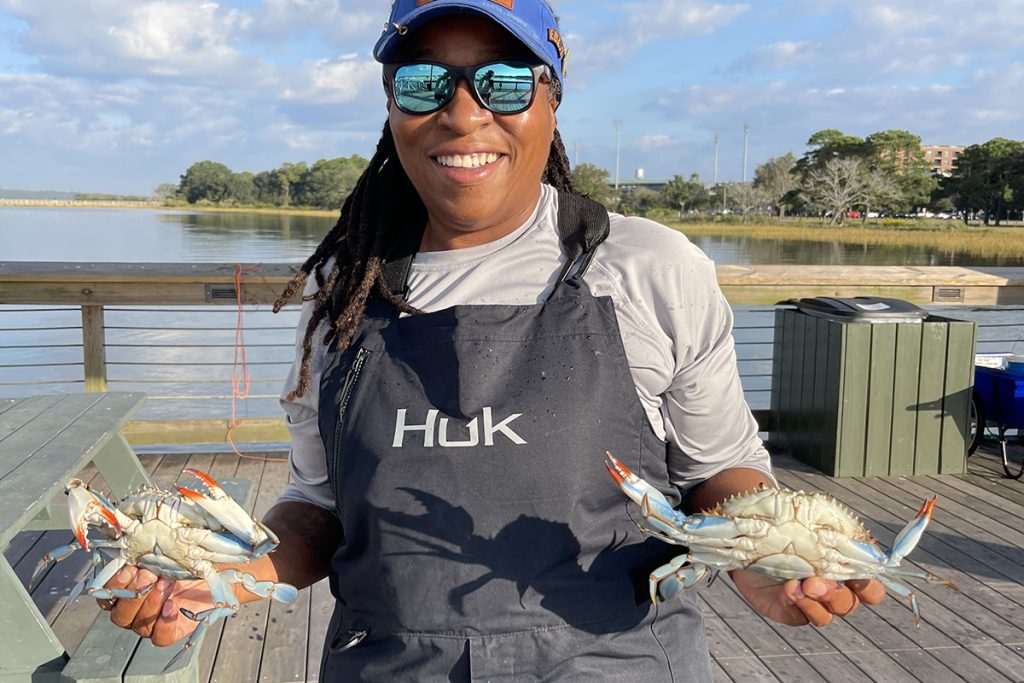
Intelligence
Crash course in crabbing spawns a budding tourism business that fosters inclusiveness
For Tia Clark, the Casual Crabbing with Tia Airbnb experience is no side hustle – it’s about representation, education and connections.
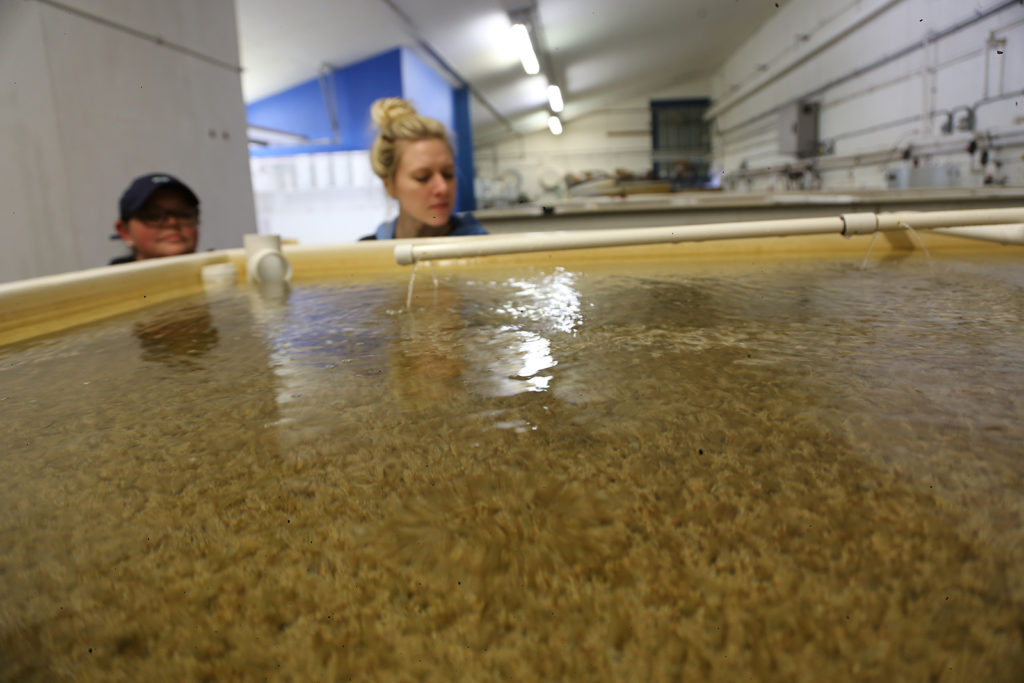
Intelligence
Uncertain times for oyster larvae production in North America
Oyster larvae producers say information sharing and perseverance are seeing them through a prolonged stretch of high larval-stage mortalities.


